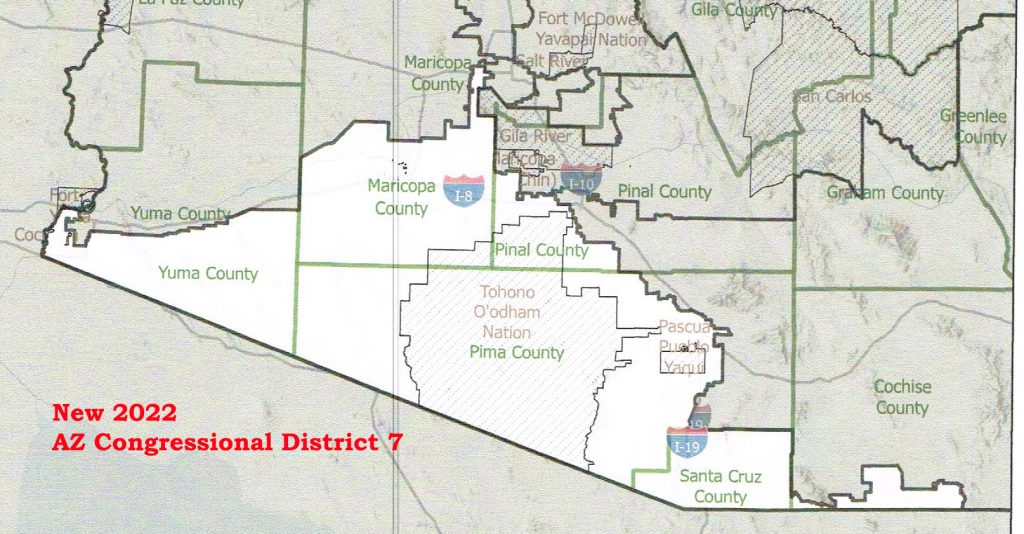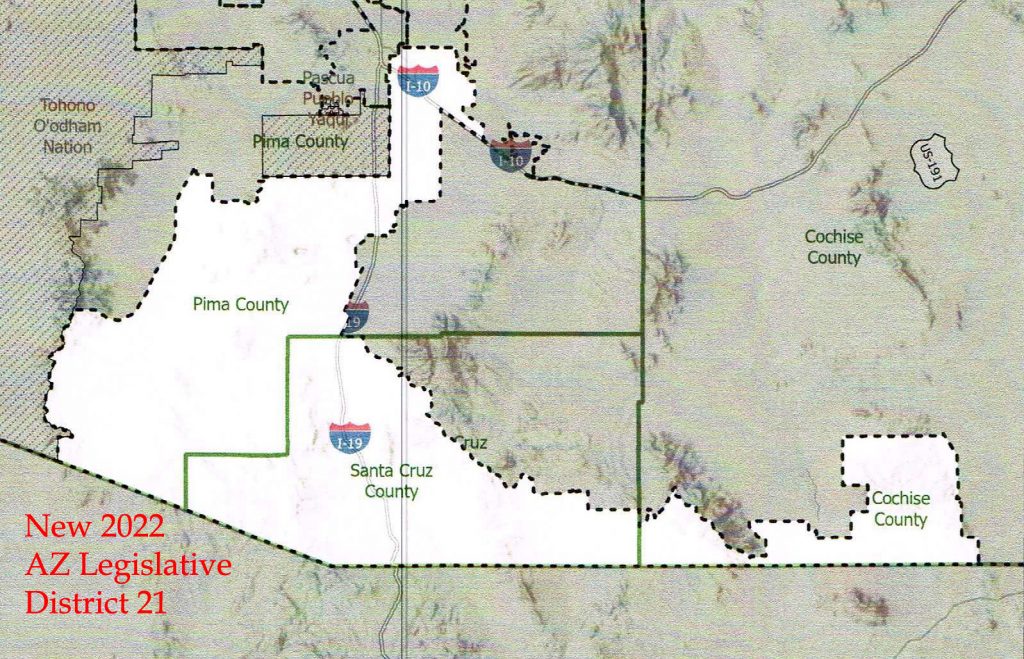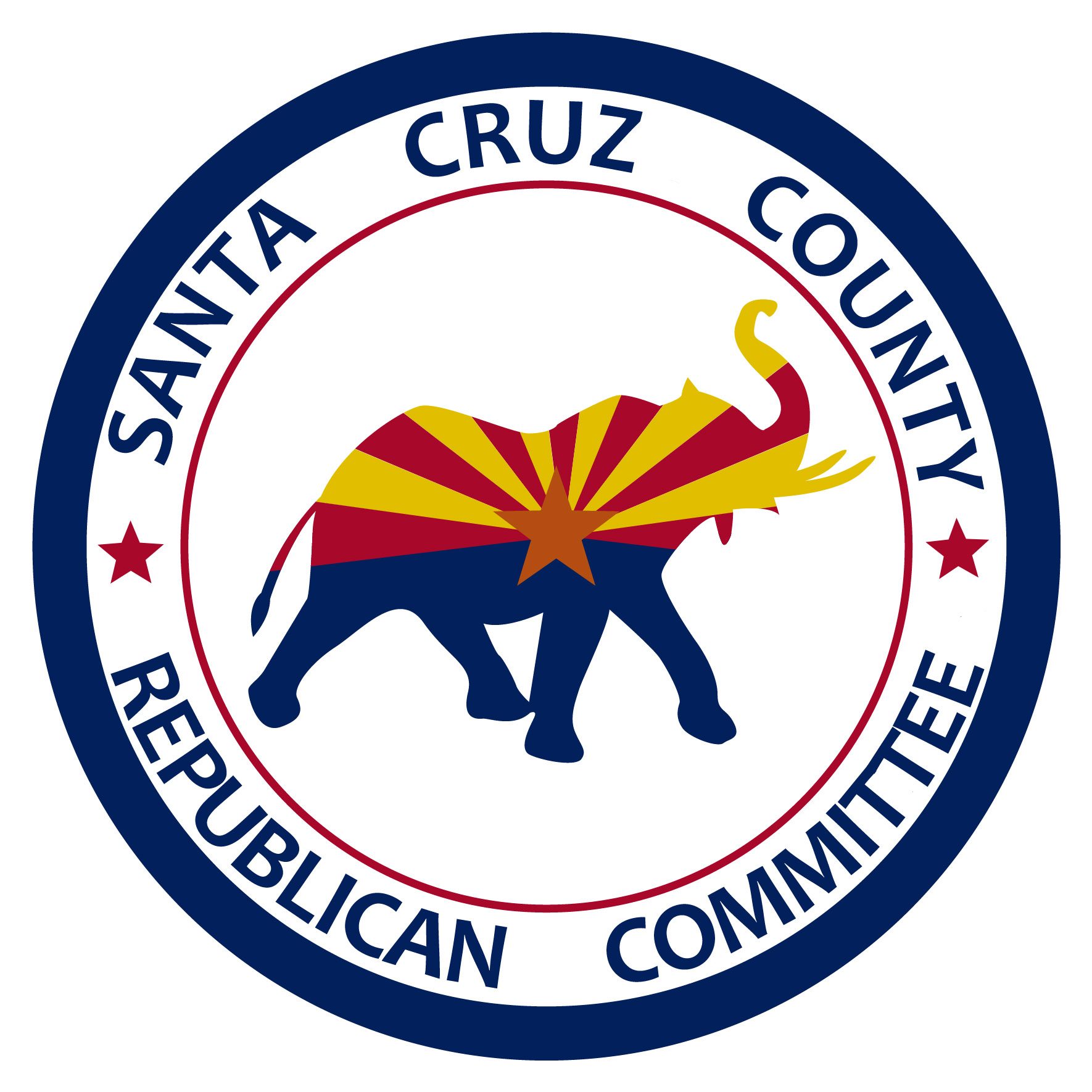Official Congressional Map Version 14.0 was officially adopted on January 18, 2022 as the Approved and Certified Official Congressional Map, and reaffirmed on January 21, 2022.

Official Legislative Map Version 17.0 was officially adopted on January 21, 2022 as the Approved and Certified Official Legislative Map.

The higher population portion of Santa Cruz County resides in AZ Legislative District 21
The Independent Redistricting Commission’s mission is to redraw Arizona’s congressional and legislative districts to reflect the results of the most recent census. The concept of one-person, one-vote dictates that districts should be roughly equal in population. Other factors to be considered are the federal Voting Rights Act, district shape, geographical features, respect for communities of interest and potential competitiveness. The state Constitution requires the commissioners – two Republicans, two Democrats and an independent chairperson – to start from scratch rather than redraw existing districts.
A new Arizona Independent Redistricting Commission was appointed in January 2021 to adopt new congressional and legislative districts for Arizona. This comprehensive website is being used to inform the public about its work.
The Mission & Goals of our new Arizona State Legislative District 21 are to recruit and support our 2 Representatives and 1 Senator.
The Arizona State Senate is also known as the upper house of the Legislature, made up of 30 Senators, one from each of Arizona’s 30 legislative districts. They serve two years terms but voters created the Arizona Term Limits Act in 1992. That initiative made it so Arizona senators are subject to term limits of no more than four two-year terms, or a total of eight years. The Senate works with House and is part of the Legislative Branch of government. The Senate’s duties include; drafting introducing and voting on legislation or laws, that only require a simple majority for a bill to pass. Although, a two-thirds vote is needed to pass any tax increase. The Senate also can create laws and add amendments to the Arizona state constitution. In conjunction with the House, the Senate approves the state’s annual budget. The Senate has the authority to expel a legislator with a two-thirds vote. The Senate can also confirm or deny any gubernatorial appointee for the Executive Branch offices. The Senate also has the power to impeach and remove elected officials from office as suggested by the House. A two-thirds vote also can call a Special Session of the Legislature to deal with a particular issue of seriousness, unfinished business, or emergency. The president of the Senate serves as presiding officer and he or she is selected from the members of the Senate.
The Arizona State House of Representatives is also known as the lower house of the Legislature, made up of 60 Representatives, two from each of Arizona’s 30 legislative districts. They serve two years terms but voters created the Arizona Term Limits Act in 1992. That initiative made it so Arizona State Legislators are subject to term limits of no more than four two-year terms, or a total of eight years. Arizona has 30 legislative districts. Representatives are elected from the same legislative districts as the members of the Arizona State Senate. Each district elects one senator and two representatives. As part of the Legislative Branch of government, Representatives in the House have the authority to draft, introduce and vote on legislation or laws, that only require a simple majority for a bill to pass.
A two-thirds vote is needed to pass any tax increase. The House works with the Senate to approve the state’s annual budget. The House has the exclusive power to impeach an elected state official, but yields to the Senate for any trial or conviction. The House can call for the removal of another legislator with a two-thirds vote. A two-thirds vote can demand a Special Session of the Legislature body to deal with a particular issue of seriousness, unfinished business, or an emergency. Legislators in the House elect a speaker to serve as presiding officer of the legislature. Responsibilities of the speaker include maintaining order and decorum, selecting points of order, and appointing a speaker pro tempore. The speaker can vote in all cases other than to resolve the speaker’s own rulings.
